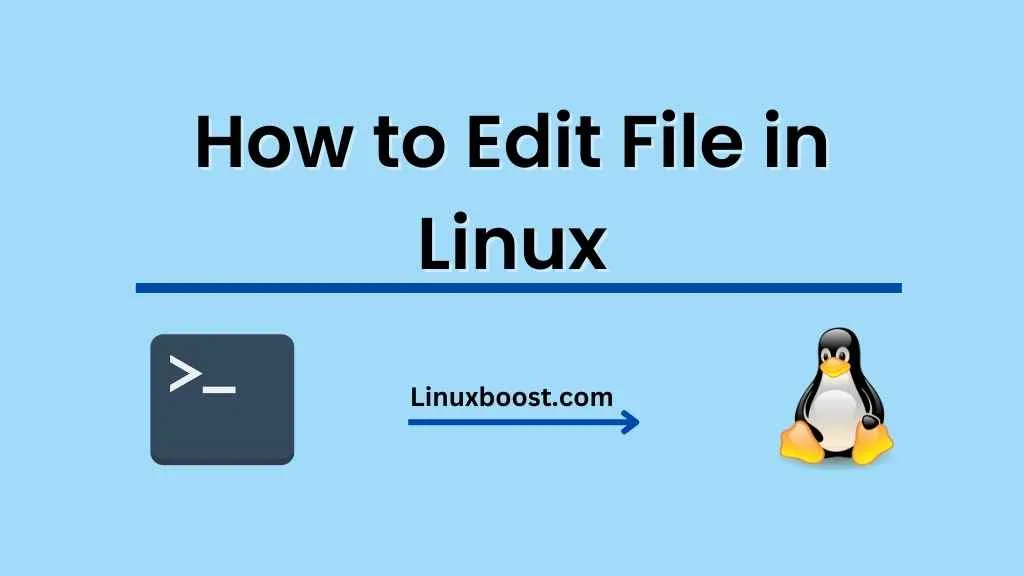Editing files in Linux is an essential skill for any Linux user. Whether you’re a system administrator or a casual Linux user, you will often need to edit files to modify system settings, update configurations, or write scripts. Fortunately, Linux provides a variety of tools that make file editing straightforward and efficient.
In this blog post, we will explore several ways to edit files in Linux, including using command-line editors and graphical user interface (GUI) editors. We will also cover some essential commands that you will need to know to navigate and edit files in Linux.
Linux command-line editors
There are several command-line text editors available in Linux, but two of the most popular are Vim and Nano.
How to edit file using Vim
Vim is a powerful, modal text editor that is often preferred by advanced users due to its efficiency and flexibility. To edit a file using Vim, open a terminal and type the following command:
$ vim filename
This will open the file in Vim’s default mode, which is command mode. To enter insert mode, which allows you to add or modify text, type the i key. Once you’re done editing, press the Esc key to return to command mode. To save and exit the file, type :wq and press Enter.
How to use Nano to edit files in Linux
Nano is a more user-friendly, straightforward text editor that is often preferred by new Linux users. To edit a file using Nano, open a terminal and type the following command:
$ nano filename
This will open the file in Nano’s editing mode. Simply type your changes or modifications, and when you’re done, press Ctrl+X to exit. Nano will prompt you to save your changes before exiting.
GUI file editors in Linux
If you prefer a more graphical interface, Linux also provides several GUI text editors, such as Gedit and Kate.
a. Gedit
Gedit is a simple and easy-to-use text editor that is included in many Linux distributions. To open a file in Gedit, navigate to the file in your file manager, right-click on the file, and select “Open with Gedit.” Alternatively, you can open Gedit from the terminal by typing the following command:
$ gedit filename
Once the file is open in Gedit, you can simply click and type your changes or modifications. To save your changes, click the “Save” button or press Ctrl+S.
b. Kate
Kate is a more advanced text editor that provides features such as syntax highlighting and code folding. To open a file in Kate, navigate to the file in your file manager, right-click on the file, and select “Open with Kate.” Alternatively, you can open Kate from the terminal by typing the following command:
$ kate filename
Once the file is open in Kate, you can edit it as you would in Gedit. To save your changes, click the “Save” button or press Ctrl+S.
Essential commands
Regardless of which editor you choose, there are several essential commands that you will need to know to navigate and edit files in Linux. These include:
cd: Change directoryls: List files in the current directorymkdir: Create a new directoryrm: Remove a file or directorycp: Copy a filemv: Move or rename a filecat: Display the contents of a filegrep: Search for a pattern in a filechmod: Change the permissions of a file or directorychown: Change the ownership of a file or directory
In conclusion, editing files in Linux is a fundamental skill that every Linux user should master. Whether you prefer command-line editors or GUI editors, it’s important to know how to navigate and edit files efficiently using basic commands.
It’s also worth noting that when editing system files, you will often need to use elevated privileges. In Linux, this is typically done using the sudo command, which allows you to execute commands with administrative privileges. For example, to edit the /etc/hosts file, you would use the following command:
$ sudo vim /etc/hosts
This will prompt you to enter your password before opening the file in Vim.
In addition to the basic commands, there are many more advanced text editors available in Linux, such as Emacs, Sublime Text, and Atom. These editors provide more advanced features, such as code highlighting, auto-completion, and plugins for customizing your workflow.
Overall, the key to editing files in Linux is to find an editor that suits your needs and to become proficient in using basic commands for navigating and editing files. With practice and experience, you’ll be able to edit files quickly and efficiently, whether you’re using the command line or a graphical interface.





